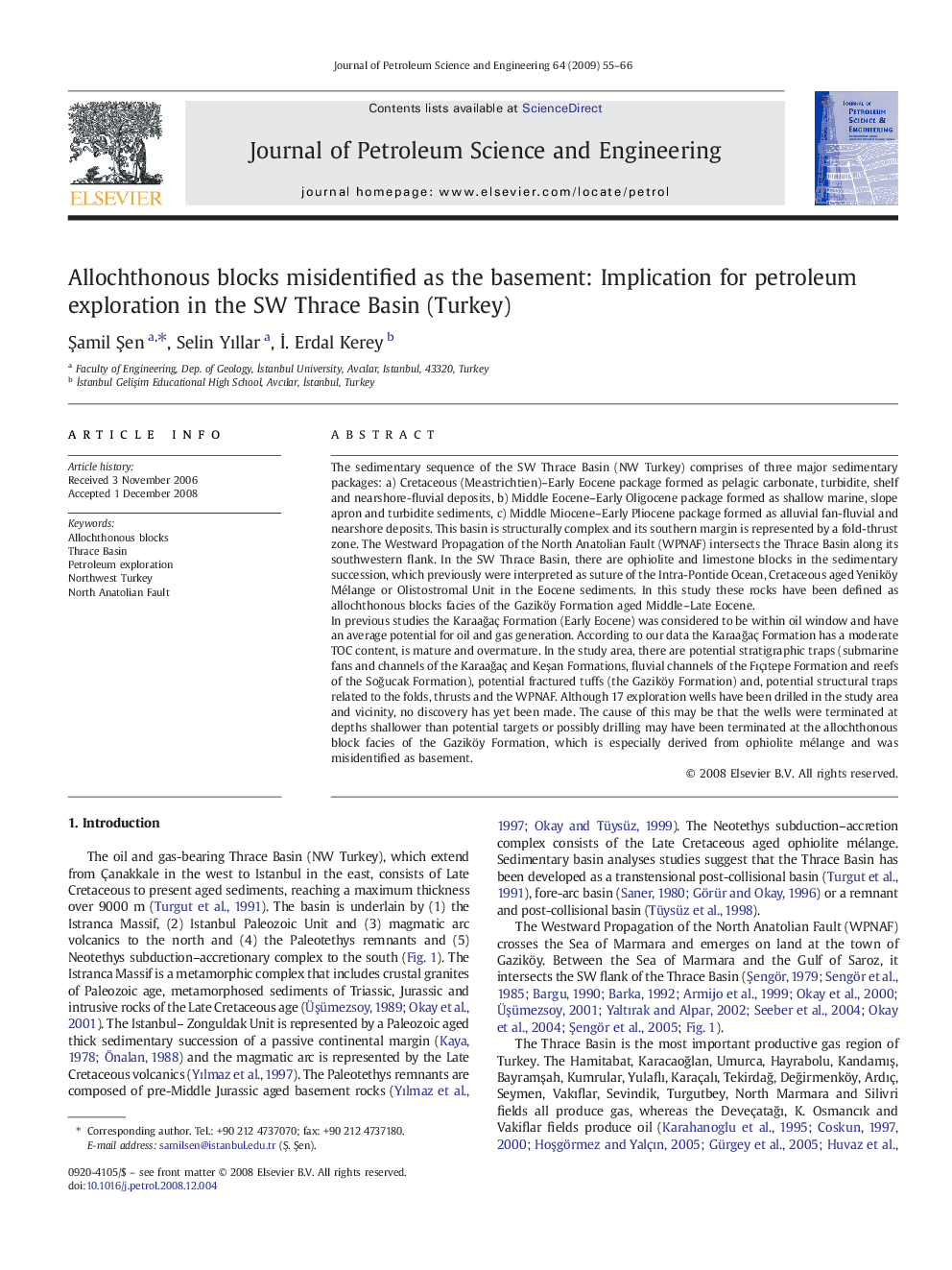| کد مقاله | کد نشریه | سال انتشار | مقاله انگلیسی | نسخه تمام متن |
|---|---|---|---|---|
| 1756181 | 1522881 | 2009 | 12 صفحه PDF | دانلود رایگان |

The sedimentary sequence of the SW Thrace Basin (NW Turkey) comprises of three major sedimentary packages: a) Cretaceous (Meastrichtien)–Early Eocene package formed as pelagic carbonate, turbidite, shelf and nearshore-fluvial deposits, b) Middle Eocene–Early Oligocene package formed as shallow marine, slope apron and turbidite sediments, c) Middle Miocene–Early Pliocene package formed as alluvial fan-fluvial and nearshore deposits. This basin is structurally complex and its southern margin is represented by a fold-thrust zone. The Westward Propagation of the North Anatolian Fault (WPNAF) intersects the Thrace Basin along its southwestern flank. In the SW Thrace Basin, there are ophiolite and limestone blocks in the sedimentary succession, which previously were interpreted as suture of the Intra-Pontide Ocean, Cretaceous aged Yeniköy Mélange or Olistostromal Unit in the Eocene sediments. In this study these rocks have been defined as allochthonous blocks facies of the Gaziköy Formation aged Middle–Late Eocene.In previous studies the Karaağaç Formation (Early Eocene) was considered to be within oil window and have an average potential for oil and gas generation. According to our data the Karaağaç Formation has a moderate TOC content, is mature and overmature. In the study area, there are potential stratigraphic traps (submarine fans and channels of the Karaağaç and Keşan Formations, fluvial channels of the Fıçıtepe Formation and reefs of the Soğucak Formation), potential fractured tuffs (the Gaziköy Formation) and, potential structural traps related to the folds, thrusts and the WPNAF. Although 17 exploration wells have been drilled in the study area and vicinity, no discovery has yet been made. The cause of this may be that the wells were terminated at depths shallower than potential targets or possibly drilling may have been terminated at the allochthonous block facies of the Gaziköy Formation, which is especially derived from ophiolite mélange and was misidentified as basement.
Journal: Journal of Petroleum Science and Engineering - Volume 64, Issues 1–4, February 2009, Pages 55–66